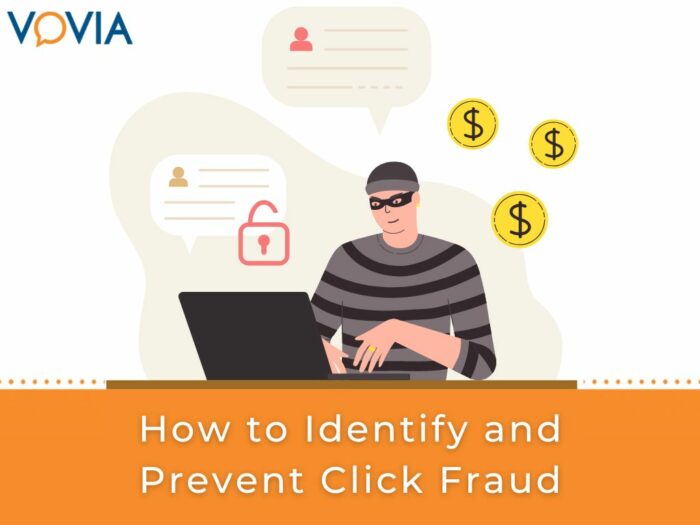Click Fraud – What is it and How do you Identify & Prevent it?
If you work in digital marketing, there’s a good chance you already know what click fraud is. If nothing else, you are aware of the term. So, what exactly is click fraud?
Click fraud is a type of fraudulent traffic that occurs on the Internet in pay-per-click advertising. When a person, computer program, or generated script takes advantage of online advertisers by repeatedly clicking on a paid ad to generate erroneous charges, this is known as click fraud. Click fraud increases advertising costs for online businesses, lowers conversion rates, and skews user data. Due to the exponential growth in digital marketing over the past few years, the occurrence of click fraud has grown as well.

What are the different types of click fraud?
- Malicious click fraud – this fraud usually happens from a competitor, to hurt your marketing campaigns by draining your advertising budget. The competitor might benefit from this as well, but the intention is to cause harm to another business.
- Bot traffic – this includes non-human users (e.g. bots, scrapers) who interact fraudulently with your ads. Given the scale necessary for these, we find that the majority of bot traffic fraud is passive in nature. The majority of click fraud activity online is through bot traffic.
- Click Farms – this happens when a large number of low-paid workers are hired to click on sponsored ad links on behalf of the click fraudster. The employees click the links, spend some time browsing the target page, and may sign up for newsletters before clicking another link.
- Passive Click fraud – this happens when your company or advertising activities are just caught up in collateral damage without any deliberate attempt to hurt them. For instance, this may be information-gathering site scrapers clicking on advertising, or it could be publishers using your display ads to produce fake impressions and consequently rewards for themselves. These activities are passive click fraud since they don’t specifically target you but instead aim to take advantage of anyone who can be used by fraudsters.
All ad networks are investing heavily in click fraud prevention. For example, companies like Google collaborate with companies that provide click fraud prevention to investigate potential solutions to these issues. Despite the fact that selling you clicks is how ad networks make money, this isn’t usually their primary goal. Ad networks like Google typically offer a reactive layer of protection against click fraud and fraudulent ad behaviour. This means that they will examine it after it has already happened and, if they find it to be fake, reimburse you later. The ad networks, unfortunately, do not proactively stop these fraudulent clicks from happening at the moment.
How can you spot click fraud? Look for the following:
- Repeated clicks from similar IPs without conversions
- Inexplicable spikes in ad impressions and number of clicks
- Increase in bounce rates
- Anomalies in performance data that can’t be explained
What is the impact of click fraud?
- Ad budgets are wasted on non-genuine and malicious click activity
- Conversion rates are lowered
- Daily budgets are quickly exhausted, removing you from the auctions for the rest of the day (lost customers)
- Marketing data is skewed
How can you reduce or avoid click fraud?
- Monitor regular user behaviour and set up IP exclusions
- Check historical CTR and conversion rates for your campaigns
- Narrow down your ad targeting
- Have a strong placement exclusion list in place
- Use specific click fraud protection tools that automatically identify signs of click fraud, such as Lunio or Click Cease. At Vovia we have experience using both of these tools and actively use them on many of our client accounts.
When you pay for each click, you need to generate sales to recoup your costs, but if you frequently receive fraudulent clicks, this is simply not viable. Because of this, it is crucial that you pay special attention to the problem of fake clicks and learn how to identify and avoid them.